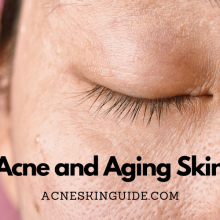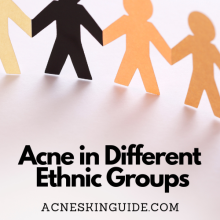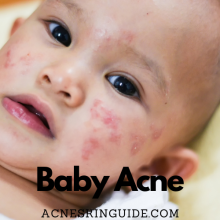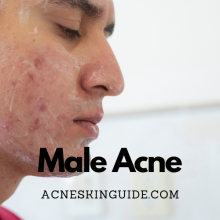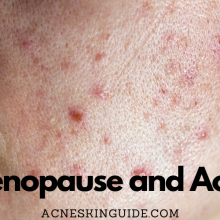Teenage Acne – A Comprehensive Guide for Parents and Teens | AcneSkinGuide
Summary of Teenage Acne Guide
Acne is an extremely common issue affecting up to 85% of teens, with severe cases taking an emotional toll. The main causes are hormonal changes increasing oil production, as well as genetics, diet, stress, and skincare habits. Treatment requires a multifaceted approach combining topicals like retinoids and benzoyl peroxide, oral medications, and in-office procedures tailored to the individual’s severity. Prevention involves a low-glycemic diet, properly removing makeup/sweat, managing stress, and using non-comedogenic products.
Parents play a vital role through open communication, enforcing routines, validating feelings, and seeking professional help when needed. While treatments have potential side effects like dryness or cost barriers, getting acne under control with a comprehensive regimen focused on both physical and emotional health is worthwhile for boosting teen confidence during this temporary phase.
Our Top 3 Recommended Acne Treatment Products

#1 Paula's Choice Acne Treatment
The 3-step kit features a cleanser and exfoliating solution with 2% salicylic acid, as well as a 5% benzoyl peroxide treatment that effectively treats even severe acne, though the benzoyl peroxide can be drying. The kit delivers serious results for stubborn acne, despite its slightly higher price point compared to drugstore options. Check The Price At Amazon.com
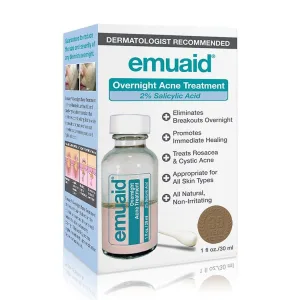
#2 EMUAID Overnight Acne Treatment
The EMUAID Overnight Acne Treatment features a two-phase solution, with an exfoliating first step to unclog pores and an intensive treatment gel that rapidly reduces inflammation, redness, and swelling of even severe, cystic breakouts, despite a slightly medicinal scent and higher price point compared to other options. Check The Price At Amazon.com

#3 Differin Acne Treatment
The Differin 0.1% adapalene gel normalizes cell turnover and unclogs pores to effectively treat acne, though it requires 2-3 months of consistent use with an adjustment period of dryness and purging before seeing maximum results, which are worth the effort for clearer, more even-toned skin. Check The Price At Amazon.com

Thriving Through Teenage Acne: Fostering Clear Skin and Self-Assurance
Acne is one of the most common skin conditions affecting teenagers, with reports showing up to 85% of young adults between 12-25 years old experiencing at least minor acne. While completely normal due to hormonal changes, acne can take a serious toll on a teen’s self-esteem and emotional well-being. As both a physical and psychological issue, it’s crucial for parents to understand teenage acne comprehensively in order to help their children through this challenging period.
The Main Culprits Behind Teenage Acne
Multiple factors converge to cause the perfect storm for acne flare-ups during adolescence. The key driver is hormonal fluctuations, as an increase in androgens causes the sebaceous glands to produce more sebum (oil). This excess oil can clog pores and create an environment ripe for acne-causing bacteria to multiply.
Other contributors include genetics (studies show acne can run in families), certain medications like birth control pills, high-carb diets, stress, and failure to remove makeup, sweat, and dirt from the skin properly. For teen athletes, friction and sweat trapped under sporting equipment can exacerbate body acne.
Types and Severity Levels
Not all pimples are created equal. Acne can range from mild (blackheads, whiteheads) to moderate (inflamed papules and pustules) to severe (large, painful nodules and cysts). Severe cases carry a risk of permanent scarring.
It’s also important to rule out conditions that can be mistaken for acne, like rosacea. Differentiating true acne from look-alike issues ensures proper treatment.
For teen girls, it’s common to experience cyclical hormonal acne flare-ups around their menstrual cycle. Tracking this pattern can help determine if hormonal therapy may be an effective solution.
Treatment: A Multifaceted Approach
From over-the-counter products to prescriptions to in-office procedures, there is no one-size-fits-all acne treatment. Dermatologists typically recommend a multi-pronged approach combining various remedies:
- Topicals like retinoids, benzoyl peroxide, and salicylic acid help unclog pores and kill bacteria
- Antibiotics (oral or topical) reduce inflammation
- Birth control pills or anti-androgen drugs regulate hormones
- Procedures like extractions, steroid injections, chemical peels
- Emerging treatments such as prescription cleansers and new topical formulations
The regimen is tailored to the individual’s acne severity, skin type, and preferences.
Prevention and Lifestyle
While there’s no way to completely prevent acne, following healthy skincare and lifestyle habits can help manage breakouts:
- Use non-comedogenic makeup, sunscreens, and hair products
- Cleanse skin gently after sweating and before bedtime
- Eat a nutritious, low-glycemic diet and stay hydrated
- Reduce stress through exercise, meditation, and getting adequate sleep
- Don’t pick or pop pimples
For active teens, it’s especially important to remove sweaty gear/helmets promptly and use a medicated body wash.
Beyond Physical: The Emotional Toll
The self-consciousness, anxiety, and insecurity that frequently accompany acne cannot be overstated. Severe acne is associated with higher risks of depression, social withdrawal, and diminished self-esteem. Building a positive body image and having healthy coping outlets is vital.
Parents can help by being supportive, avoiding criticism about appearance, encouraging social activities, and watching for signs of mental distress. Counseling may be recommended in some cases.
A Team Effort: Tips for Parents
As frustrating as the teen years can be, parents play an invaluable role in successfully managing their child’s acne. Recommendations include:
- Start age-appropriate conversations about bodily changes before puberty
- Approach the topic with patience and avoid lecturing
- Enforce consistent morning and nighttime skincare regimens
- Explore affordable treatment options if cost is a barrier
- Find a board-certified dermatologist if acne is severe or cystic
- Validate your teen’s emotional experience – don’t downplay their feelings
- Model confidence and healthy attitudes about physical appearance
With consistency and open communication, parents can help guide teens through this temporary, but impactful phase.
Before and After Results
For teens feeling hopeless about their acne, seeing real before and after transformation photos can provide motivation to stick to their treatment journey. While patience is required as remedies can take 2-3 months to work, the results are often well worth the persistence. Celebrating milestones along the way reinforces positivity.
Resources for Managing Acne
In this digital age, a wealth of trusted online resources exists for acne education and product recommendations, such as the American Academy of Dermatology’s website. Local dermatologists often have before/after photo galleries to preview their treatment results.
Increasingly, there are also online and in-person acne support communities where teens can find understanding peers facing similar struggles. Surrounding your teen with positive reinforcement helps counteract feelings of isolation.
Downsides and Considerations
Of course, no acne treatment is without potential downsides. Some products may cause excessive dryness, peeling, redness, or sun sensitivity. Oral medications require consistent use and carry risks of side effects like headaches and gastrointestinal issues.
Costs of dermatologist visits and prescriptions can add up quickly. Close guidance is needed when using powerful retinoids to avoid overuse and irritation.
And not all strategies work for everyone – genetic factors can sometimes limit the efficacy of medications and treatments. With severe acne, scarring may still occur even with proper treatment.
Still, the benefits of getting acne under control typically far outweigh the downsides, making a comprehensive regimen worthwhile.
The Bottom Line
Teenage acne doesn’t have to rule your adolescent’s life. With a proactive approach combining medicine, skincare, healthy habits, and emotional support, this temporary condition can be successfully managed. Empowering both parents and teens with comprehensive knowledge helps ease the acne experience and maintain confidence during these pivotal years of development.
Our Top 3 Recommended Acne Treatment Products

#1 Paula's Choice Acne Treatment
The 3-step kit features a cleanser and exfoliating solution with 2% salicylic acid, as well as a 5% benzoyl peroxide treatment that effectively treats even severe acne, though the benzoyl peroxide can be drying. The kit delivers serious results for stubborn acne, despite its slightly higher price point compared to drugstore options. Check The Price At Amazon.com

#2 EMUAID Overnight Acne Treatment
The EMUAID Overnight Acne Treatment features a two-phase solution, with an exfoliating first step to unclog pores and an intensive treatment gel that rapidly reduces inflammation, redness, and swelling of even severe, cystic breakouts, despite a slightly medicinal scent and higher price point compared to other options. Check The Price At Amazon.com

#3 Differin Acne Treatment
The Differin 0.1% adapalene gel normalizes cell turnover and unclogs pores to effectively treat acne, though it requires 2-3 months of consistent use with an adjustment period of dryness and purging before seeing maximum results, which are worth the effort for clearer, more even-toned skin. Check The Price At Amazon.com
FAQs and Answers
Can certain foods or dietary habits trigger or worsen acne breakouts in teens?
Yes, certain foods and dietary habits can potentially trigger or worsen acne breakouts in teenagers. Here are some key points about the role of diet in acne:
- High-glycemic foods: Foods that raise blood sugar quickly like white bread, chips, sugary snacks and drinks have been linked to increased acne severity. The resulting spike and crash in blood sugar and insulin levels may increase oil production and inflammation.
- Dairy products: The hormones naturally present in cow’s milk may worsen acne by triggering an insulin spike and hormonal fluctuations. Skim milk has been especially implicated.
- Greasy, fried foods: While oils themselves don’t directly cause acne, greasy foods can stick to skin and clog pores over time if not cleansed properly.
- Diet high in processed/refined carbs: Refined starches and sugars from white bread, pastries, and sweets may also contribute to acne by raising insulin levels.
- Poor hydration: Not drinking enough water can contribute to oil buildup on the skin.
- Nutritional deficiencies: Deficiencies in nutrients like zinc, vitamin A, and antioxidants may exacerbate acne.
The connection between diet and acne is still being researched, but experts generally recommend a low-glycemic, balanced diet focused on whole foods to help minimize breakouts. Limiting sugary, greasy, and dairy items may also provide benefits for acne-prone teens.
How can teens safely manage acne while pregnant or breastfeeding?
Managing acne while pregnant or breastfeeding requires some extra precautions, as certain acne medications can potentially harm the developing baby. Here are some tips for teens to safely treat acne during pregnancy and breastfeeding:
Pregnancy:
- Avoid oral retinoids (like isotretinoin) as they are extremely unsafe during pregnancy and can cause birth defects.
- Avoid oral tetracycline antibiotics, which can discolor developing baby’s teeth.
- Topical retinoids (like tretinoin) should also be avoided as some are absorbed systemically.
- Safe topicals include azelaic acid, glycolic acid, and some formulations of benzoyl peroxide and salicylic acid.
- Natural remedies like tea tree oil may help mild acne.
- Ask your doctor before using any acne product when pregnant.
Breastfeeding:
- Most topical acne treatments are likely safe as only small amounts are absorbed systemically.
- Oral retinoids, tetracyclines, and some oral contraceptives should still be avoided.
- Check with your pediatrician, but many consider low concentrations of benzoyl peroxide and azelaic acid okay.
- Stop nursing temporarily when using oral medications not safe for breastfeeding.
General Tips:
- Use gentle, non-comedogenic cleansers and oil-free moisturizers.
- Avoid picking or popping to prevent scarring.
- Manage stress through yoga, meditation, etc.
- Stay hydrated and eat a nutritious diet.
- Consider light therapies or procedures like facials if recommended.
The key is working closely with your dermatologist and OB/GYN to find an acne regimen that is safe and effective for you and your baby during this time.
Is it okay to use the same acne treatment products used by parents or siblings?
It is generally not recommended to share and use the exact same acne treatment products as parents or siblings. Here are a few important reasons why:
Skin Type Differences
Everyone has a different skin type (oily, dry, combination, sensitive) that can impact how they react to certain acne ingredients. A product that works well for your sibling’s oily skin may cause excessive dryness or irritation on your own dry skin.
Acne Severity
The severity of acne can also dictate what strength of treatment is appropriate. Over-the-counter products may be enough for mild acne, while prescription medications are needed for moderate to severe cases. Using a treatment intended for cystic acne on mild breakouts could lead to over-drying.
Potential Irritation
Many acne products contain drying agents like benzoyl peroxide or retinoids. Using someone else’s half-used product means you don’t know how your skin will respond and could face increased irritation.
Product Preservatives
Once opened, products have a limited lifetime before preservatives degrade and bacteria can grow. Using an old, contaminated product raises infection risks.
Medication Restrictions
If a parent or sibling is on prescription acne medication, it is illegal (and possibly dangerous) for others to use it without their own prescription.
While it may be tempting to share products, acne treatments are most effective and safe when chosen specifically for your own skin type, acne severity, and treatment needs under dermatologist guidance. Using age-appropriate formulas is also important for teens. It’s best for each person to have their own designated products.
What are the most up-to-date guidelines on sun safety and protection for acne-prone teenage skin?
Here are some up-to-date guidelines on sun safety and protection for acne-prone teenage skin:
Sun Exposure:
- Limit direct sun exposure between 10am-4pm when UV rays are strongest.
- Don’t sunbathe or use tanning beds, as UV exposure can worsen acne and increase skin cancer risk.
- Wear protective clothing like wide-brimmed hats and lightweight long sleeves when outdoors.
Sunscreen:
- Use a broad-spectrum sunscreen with SPF 30 or higher every day.
- Look for oil-free, non-comedogenic formulas labeled “won’t clog pores” to avoid acne flares.
- Consider gel or lightweight liquid sunscreens rather than heavy creams.
- Apply a nickel-sized amount to the face 15-30 minutes before sun exposure.
- Reapply every 2 hours when outdoors, or more frequently if sweating/swimming.
Acne Treatments:
- Many acne medications like retinoids, benzoyl peroxide, and antibiotics increase photosensitivity.
- Wear sunscreen diligently when using these products, and limit sun exposure.
- Ask your dermatologist about adjusting usage to nighttime during peak summer months.
Procedures:
- Intense pulsed light (IPL) and other light-based acne treatments require strict sun avoidance before and after.
- Wait until spring/fall seasons if possible to avoid peak sun exposure during treatment series.
Post-Inflammatory Hyperpigmentation:
- New acne lesions can leave red/brown marks more visible in sun-exposed skin.
- Using SPF 30+ helps minimize discoloration and allows marks to fade faster.
While sun exposure doesn’t directly cause acne, proper protection is essential for keeping acne-prone skin calm and avoiding additional discoloration or skin damage.
How can parents determine if their teen’s acne is serious enough to see a dermatologist?
Here are some guidelines to help parents determine if their teenager’s acne is serious enough to warrant seeing a dermatologist:
Severity of Breakouts
- If acne is moderate to severe with many inflamed papules, pustules, nodules or cysts
- If acne is widespread on the face, back, shoulders or chest
- If there is pain, swelling or the possibility of permanent scarring
Lack of Improvement with OTC Treatments
- If over-the-counter benzoyl peroxide and salicylic acid products don’t provide adequate clearing after 8-12 weeks of consistent use
- If acne remains persistent or keeps getting worse
Impact on Quality of Life
- If acne is causing excessive anxiety, low self-esteem, depression or social withdrawal
- If acne is leading to picking/squeezing that increases risk of scarring
- If acne is interfering with normal activities
Presence of Scarring
- If there are already signs of acne scarring developing
- If pitting, discoloration or raised scars are present
Other Concurrent Issues
- If excessive hair growth, irregular periods or other hormone irregularities occur
- If the teen has a concurrent condition like PCOS that affects acne
It’s a good idea to seek a dermatologist’s advice if acne persists beyond 6 months or if you as a parent are unsure about the best treatment approach. Dermatologists can provide prescription medications, extraction services and guidance on preventing long-term acne consequences like scarring. Severe, cystic or long-lasting acne definitely warrants a trip to a skin professional.
Our Top 3 Recommended Acne Treatment Products

#1 Paula's Choice Acne Treatment
The 3-step kit features a cleanser and exfoliating solution with 2% salicylic acid, as well as a 5% benzoyl peroxide treatment that effectively treats even severe acne, though the benzoyl peroxide can be drying. The kit delivers serious results for stubborn acne, despite its slightly higher price point compared to drugstore options. Check The Price At Amazon.com

#2 EMUAID Overnight Acne Treatment
The EMUAID Overnight Acne Treatment features a two-phase solution, with an exfoliating first step to unclog pores and an intensive treatment gel that rapidly reduces inflammation, redness, and swelling of even severe, cystic breakouts, despite a slightly medicinal scent and higher price point compared to other options. Check The Price At Amazon.com

#3 Differin Acne Treatment
The Differin 0.1% adapalene gel normalizes cell turnover and unclogs pores to effectively treat acne, though it requires 2-3 months of consistent use with an adjustment period of dryness and purging before seeing maximum results, which are worth the effort for clearer, more even-toned skin. Check The Price At Amazon.com

